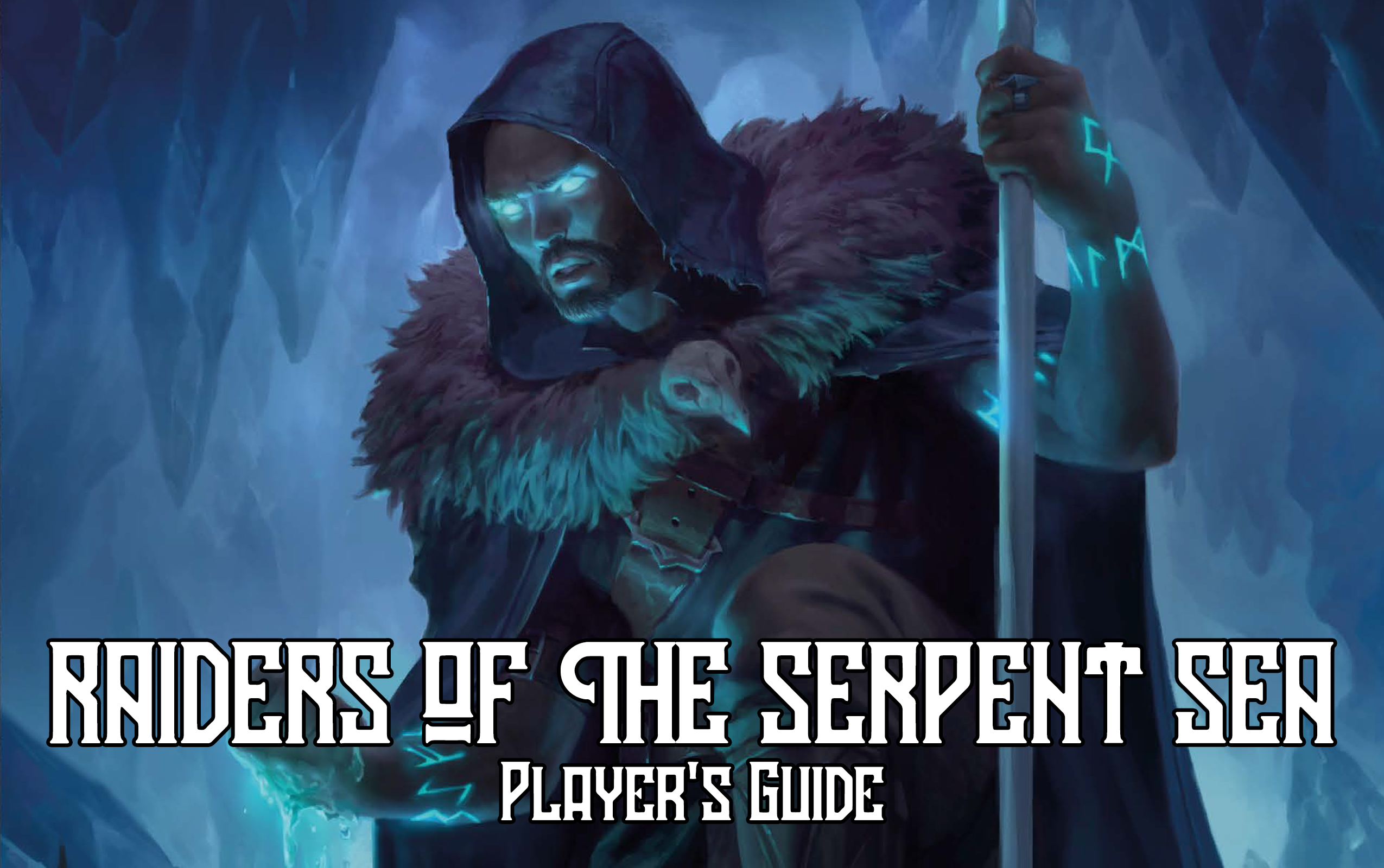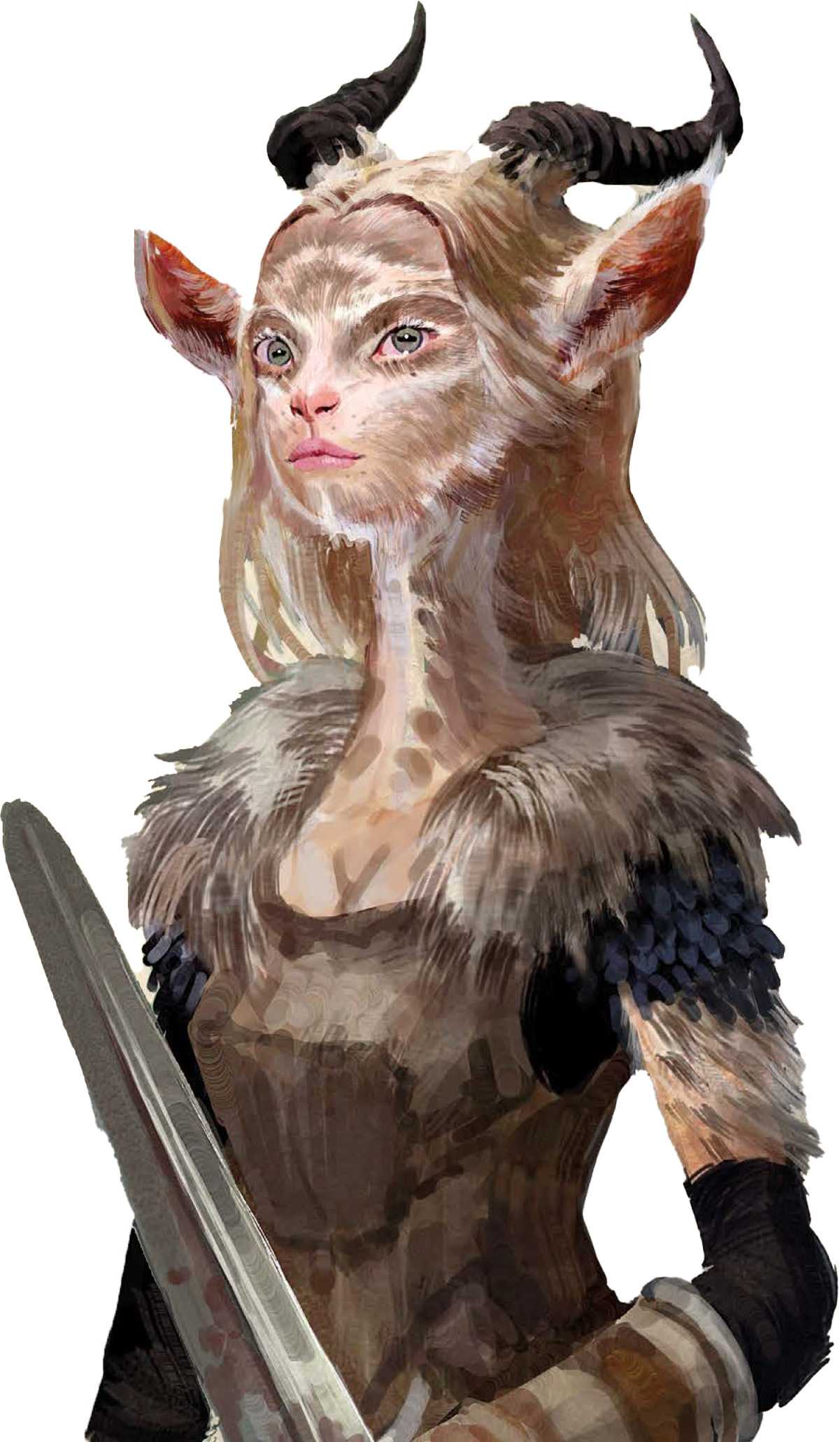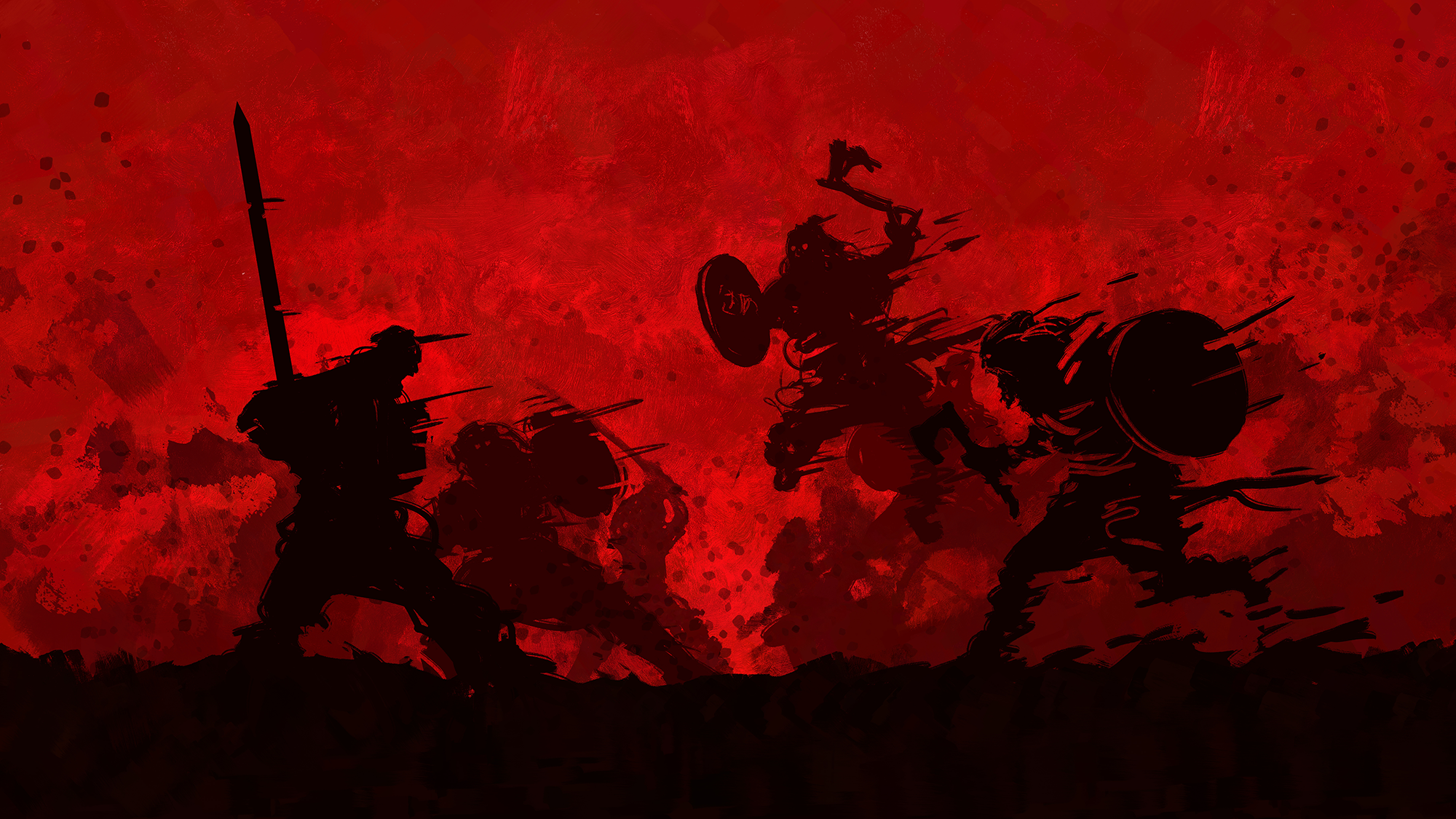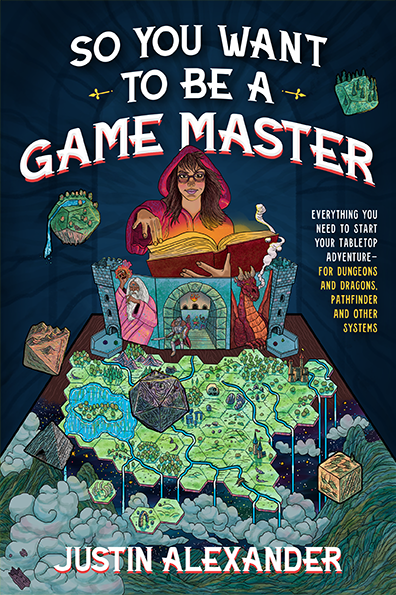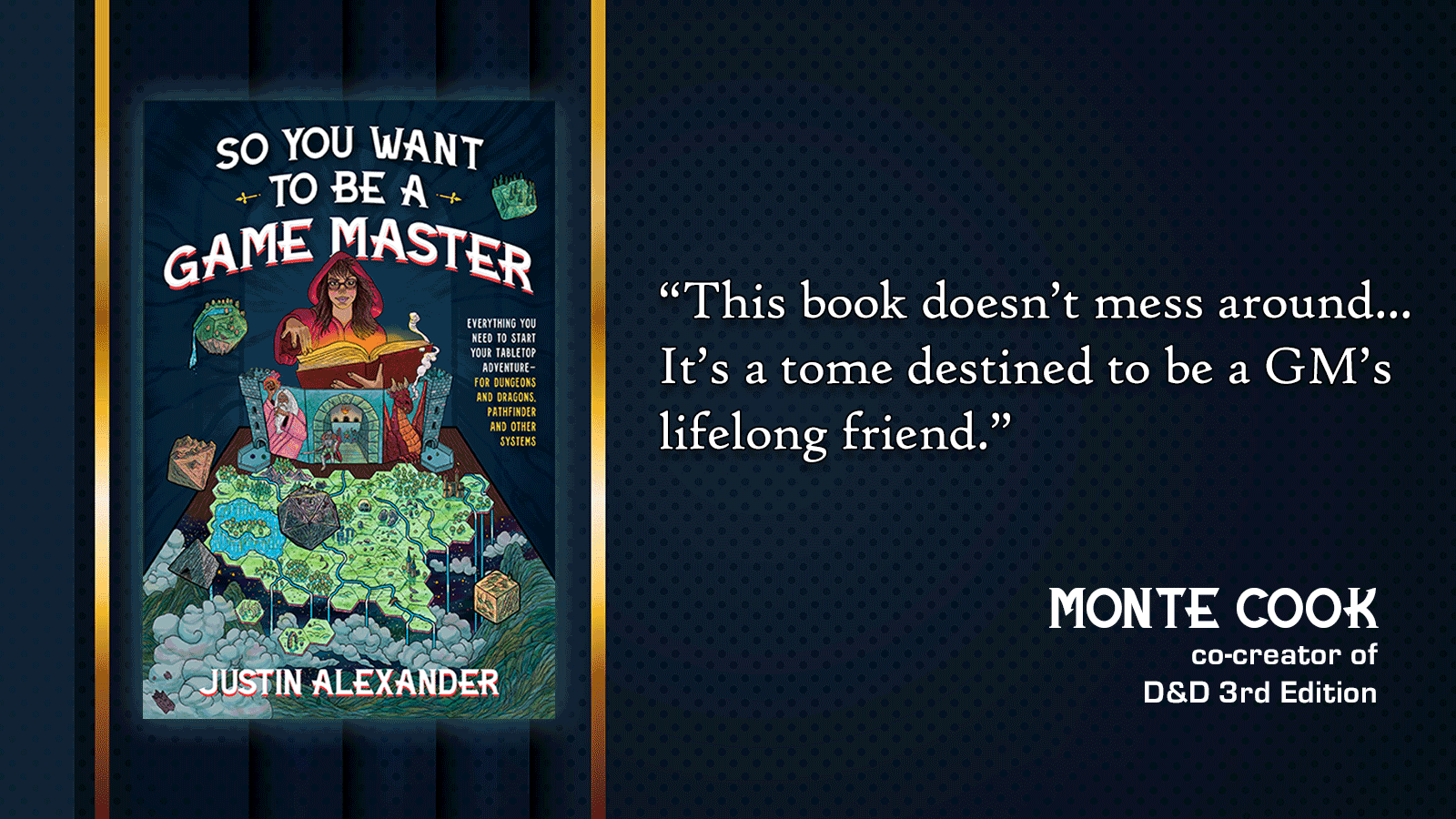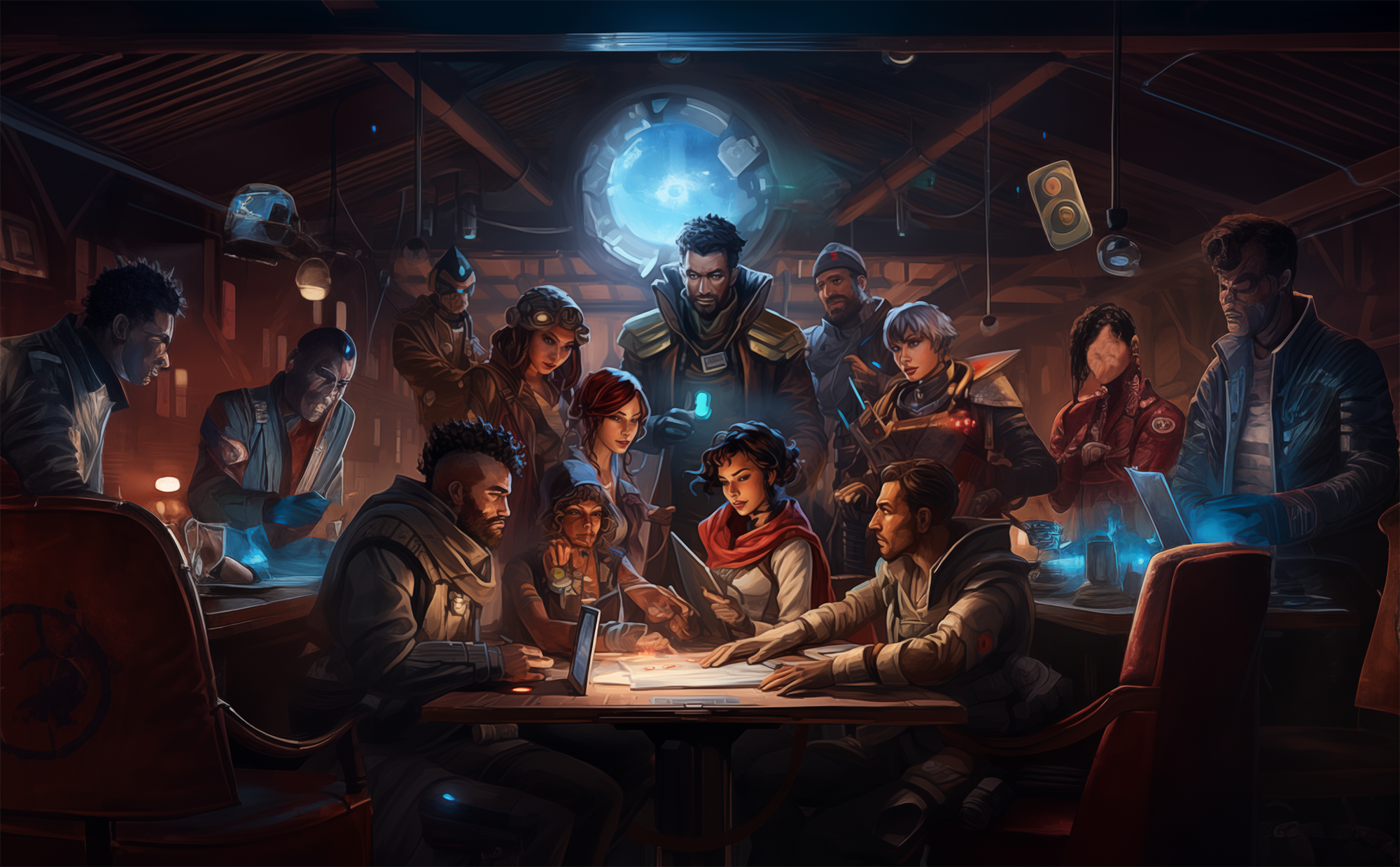
You can’t play an RPG without players. Plus, we all love RPGs and want to share with other people how awesome they are, so it’s always tempting to invite just one player to your game.
But every player you add to your table comes with an inevitable and unavoidable entropic cost.
Take your total amount of playing time and divide it by the number of players: That’s the maximum amount of spotlight time — the maximum amount of focus — that you can give to each player. The more players you add, the less time each player has. You can speed things up, you can cheat a bit around the edges with multitasking and other advanced techniques, but ultimately, no matter how good a GM you might be, you’ll reach a point where individual players are no longer able to participate enough to have a good time.
A fairly concrete example of this is the typical round-based combat system: A player takes their turn and then must wait for everyone else in the fight to take their turn before they can take their next turn. Consider a table with ten players: Even if you got the per-turn resolution speed down to a fairly fast two minutes per turn, it would still take twenty minutes to go around the table. In practice, of course, it’s even worse, because the bad guys also need to take a turn, and the more PCs you have in the party, the more bad guys you need to have in the fight. Once again, you can cheat this with stuff like off-turn actions (although these typically only increase the length of a combat round), but only to a point.
Imagine an episode of a television show in which a character was onscreen for just a couple of minutes. You’d consider that a bit part, right?
That’s what having a too-high player count at your table does: It turns every player into a bit part.
Another problem you’ll run into is niche protection: It’s very easy for an RPG group to fall into a pattern of “let the PC with the highest skill bonus do it.” This sidelines other PCs, but you can route around it in practice by having different PCs be the best at different things, so that everybody gets a turn at being the PC with the highest skill bonus (metaphorically or literally).
As player count increases, though, you start to run out of niches. Some RPGs are better at niche protection than others, but at a certain point you’re also dealing with scenario dynamics that extend beyond the mechanics: How many fundamentally different types of activities are there to do in a dungeon? Or while solving a mystery? Or during a heist?
Once you run out of niches, each additional player increases the risk of your game entering a fail state in which a PC is never the best at a given task, and therefore the player never gets to do anything: The bit player becomes a background extra.
THE SWEET SPOTS
If this entropic cost was the whole story, of course, the logical conclusion would be that the ideal RPG group would always have exactly one player. And that doesn’t sound right, does it?
The reality is that there are other factors at play in determining the ideal group size. (Pun intended.) Perhaps the best way to look at these factors is to run through the various group sizes, including the features and weaknesses of each in turn.
Some GMs will have one specific “sweet spot” for group size that they’re always trying to hit. I tend to think more in terms of, “What’s right for this game/group?” Nevertheless, this discussion will, inevitably, be shaped by my own biases, so take it with however many grains of salt you feel are necessary.
I’ll also note that the player counts here do NOT include the Game Master.
ZERO. There are an increasing number of solo-play RPGs and STGs, allowing you to get your narrative tabletop fix without any other players at all. These games have a unique dynamic and they don’t always scratch the same itch as running a game for players (or playing a game with a GM), but they do have the obvious advantage of being able to play whenever you want to.
ONE. One GM, one player. This table obviously has no problems with spotlight balance and it creates a very intimate experience. This intimacy, however, also creates intensity: The GM never gets a break while the players talk to each other, and the player, similarly, can never slip into the audience stance and recharge their creative batteries. I recommend taking breaks more frequently.
The other problem with having only one player is fragility. Combat is once again the easy example: When you have multiple PCs, a single PC getting knocked down to 0 hit points is a minor problem. When you only have one PC, on the other hand, it’s a campaign ending disaster. (So you’ll want to be very conservative when balancing combat encounters, try to frame fights with non-lethal stakes whenever you can, and probably limit the number of fights in general.)
This fragility, however, is not limited to TPKs. Consider a mystery scenario in which a clue has been hidden under a rug: For the clue to be found you just need one player to realize they should check under the rug. When you have lots of players, that’s lots of opportunities for the clue to be found, but with only one player you’re far more likely to run into blind spots. Plus, the single player has no one they can take things through with and no downtime to ponder things quietly without the GM staring at them, further limiting their ability to brainstorm problems.
TWO. Playing with a pair of players is still fairly intimate. There’s still a lot of fragility with only two PCs, but the players can now bounce ideas off of each other, which helps non-combat fragility a lot. (Two heads really are better than one!)
In practice, this dynamic also substantially dials down the intensity: The players will talk to each other, giving the GM a break. Focused interactions between the GM and one of the players are likely to alternate, giving each player the ability to intermittently slip in audience stance, relax, and regroup.
THREE. This is a very weak group size for me. It lacks the focus of one or two players, but combat fragility remains dangerously high. (This is not, to be clear, a specific mechanical problem: It’s a more fundamental issue of what happens when a group simultaneously loses one-third its firepower and the bad guys refocus their attacks on the remaining two PCs.)
If I’m looking at a group of three players, I will almost always try to figure out how to drop down to two players or step it up to four players.
FOUR. Having four players seems to be the sweet spot for a lot of GMs, and if we look at the issues we’ve been discussing, this probably isn’t surprising. Combat fragility is greatly reduced with four PCs and there are plenty of players to bounce ideas around. Everyone at the table has the opportunity to take short breaks, update their notes, or slip into audience stance during play, but it’s fairly easy to protect niches and balance spotlight time.
FIVE. To put my cards on the table, this is probably my default sweet spot. The dynamics of play remain very similar to four-player groups, but with one important difference: There’s an odd number of players.
This might seem like a minor difference, but in my experience, it has a huge impact when splitting the party. (And you should always split the party.) With four players, the group will always split into pairs, and at many tables they’ll end up being the same pairs every time. That’s not necessarily a bad thing, but it’s a limited dynamic.
With a five-player table, on the other hand, the three-two divide has an inherent imbalance that seems to naturally lead the players to ask, “Which task needs the extra person?” This creates unstable sub-group formation, so over the course of a campaign you’ll end up with lots of different mixes of PCs. You’re also more likely to see some solo split-offs (four-one) and three-group splits (two-two-one or three-one-one). This not only creates a larger range of strategic decisions, it also results in a wider array of party dynamics, creating unique roleplaying opportunities between the players.
The other big advantage of the odd player count is that the party can’t stalemate when they disagree about the best course of action. With four players, two players can want to do X and while two players want to do Y, and the whole session can bog down to an endless debate. With five players, on the other hand, such stalemates will often be resolved with a simple majority vote and play can quickly move forward.
SIX. This is a maximum group size that I’ll run for, and I’ll usually only do it if there’s a special reason for the extra player. Basically, there doesn’t seem to be any advantage to running a six-player group compared to a four- or five-player group, but the entropic effects of player count really start kicking in here for me: Combat encounters become more difficult to balance. It’s increasingly difficult to keep things moving at the table fast enough so that players don’t become bored. (Plus, you’re back to even-player-count stalemates, further slowing down play.)
Once I get to seven or eight players, things start falling apart pretty quickly. You can certainly muddle through, but the experience is fundamentally compromised for everyone at the table compared to more manageable player counts.
The largest number of players I’ve personally run an RPG for was twelve. To make matters worse, it was a session of 1974 D&D in which most of the PCs had hirelings, sometimes multiple hirelings! The total party size was actually twenty-four characters!
It was a unique and fascinating experience. I don’t regret it. But I definitely didn’t want to repeat it!
I HAVE SO MANY PLAYERS!
Okay, despite my imprecations (and perhaps your best intentions!), you find yourself with an unmanageable number of players. The exact count we’re talking about will depend on your preferences, your skill, your game system, and your group, but unmanageable is unmanageable.
What should you do?
SPLIT THE TABLE
Eight players are unmanageable, but two tables with four players each would be awesome. So the easiest thing would be to just split up the unmanageably large group into multiple smaller groups.
The two major disadvantages, of course, are that (a) the players don’t all get to play with each other and (b) now you need to prep and run two separate campaigns.
OPEN YOUR TABLE
You can expand on the concept of splitting your table by opening your table: Instead of having a dedicated group in which all of the players meet for every session, you instead boot up a campaign where players can show up whenever they’re available and you can run an adventure for whatever the impromptu group ends up being.
If you’ve already got an unmanageable number of players, then you’ve already got a solid player base for a great open table. Even better, an open table empowers you to invite even more players to your game!
Of course, your goal is to keep your player counts manageable, so you’ll want to impose a table cap for each session.
At first glance, it might seem as if this would mean that players would end up playing less, but the quality of that play will be substantially higher. And if you have a group that only plays if a certain quota of players is met, an open table can paradoxically result in every player actually getting to play more as the open table organically routes around scheduling conflicts.
The process for this is described in more detail as part of the Open Table Manifesto.
A SECOND GM
One way to turn the unmanageable into the manageable is to get more hands on deck managing it.
There are a number of different ways that a second GM – or, more accurately, a GM team-up – can be used to good effect, but one is to bring larger player counts under control.
This only works with very specific set-ups, though. Ideally, you want to be able to split the party. (In fact, you’ll want to encourage the players to do so.) And you’ll want to have a second playing space so that the second GM and their section of the group can step away and play separately.
This effectively doubles up large sections of your playing time, allowing you to steal a march on the clock.
MULTIPLE PCs
On the other end of the spectrum, what if you don’t have enough players? (Just one or two players, for example.)
You can, of course, adjust your scenario design to accommodate a small PC group, but this can be surprisingly difficult. (Ironically, games designed to protect niches for larger groups may make it difficult or impossible for a single PC to do everything required for a successful session.)
Apply enough elbow grease, of course, and you can always make it work somehow. A more straightforward approach, however, can be to simply have each player play multiple characters.
It should be noted that this can be quite difficult for players. Some players just won’t enjoy the character-swapping, since it can be disruptive to what they enjoy about a roleplaying game. But if it works, it’s a great way to make smaller gaming groups viable!
Even if you have players who don’t want to (or can’t) take on the challenge of multiple PCs, hirelings played by the GM may be another option. This, too, can be quite difficult, particularly with everything else you’re juggling as a GM, but it can be another easy option if it works for you.


